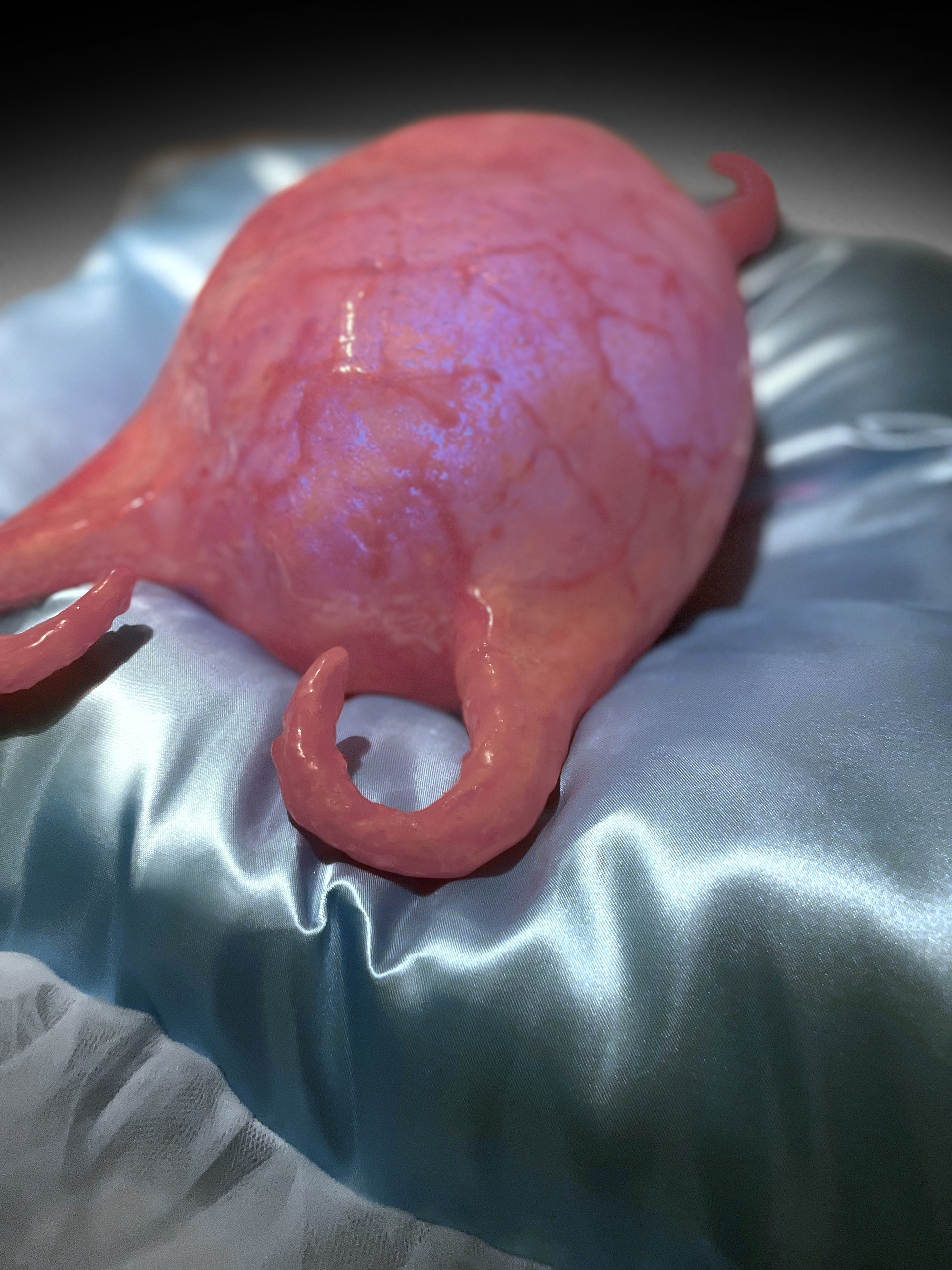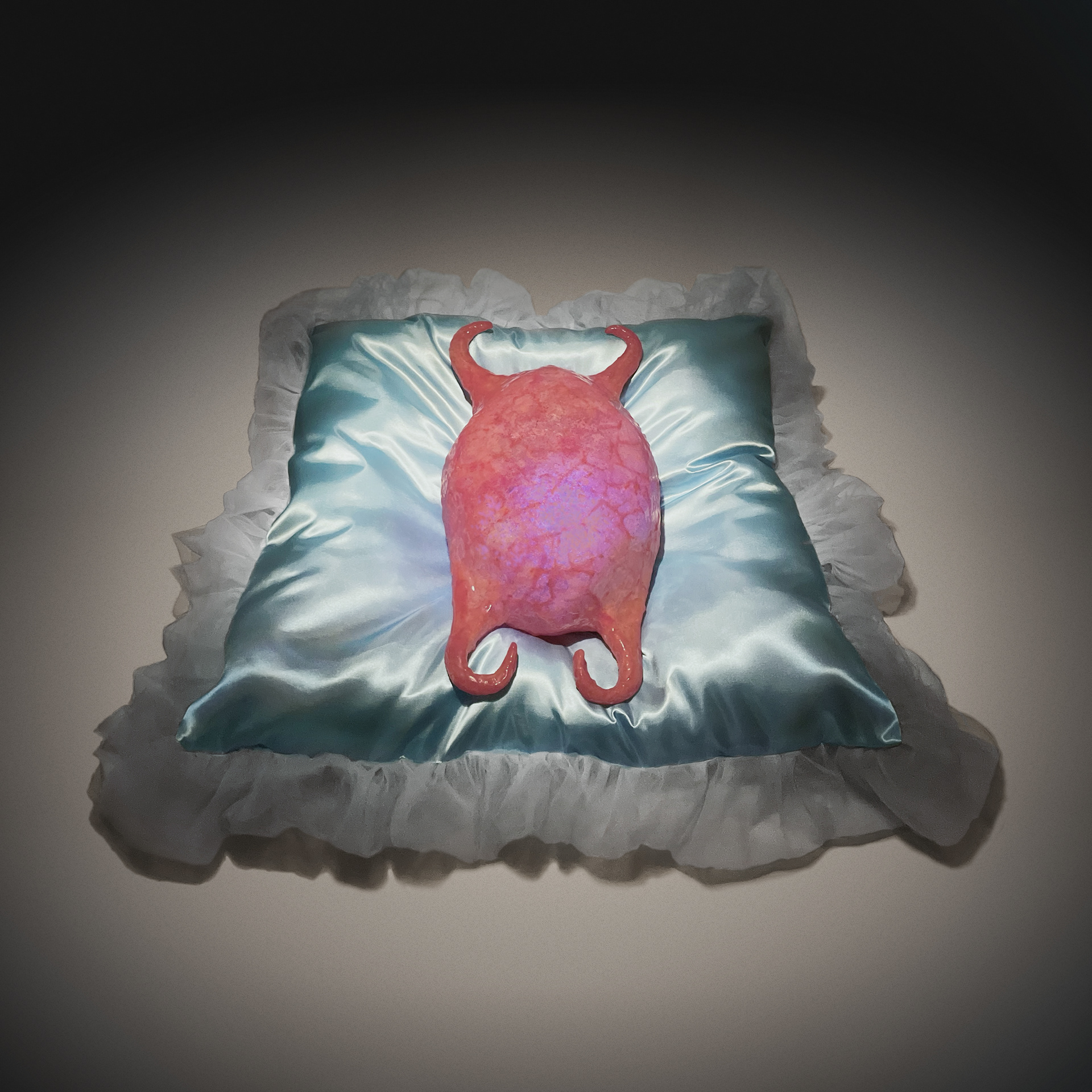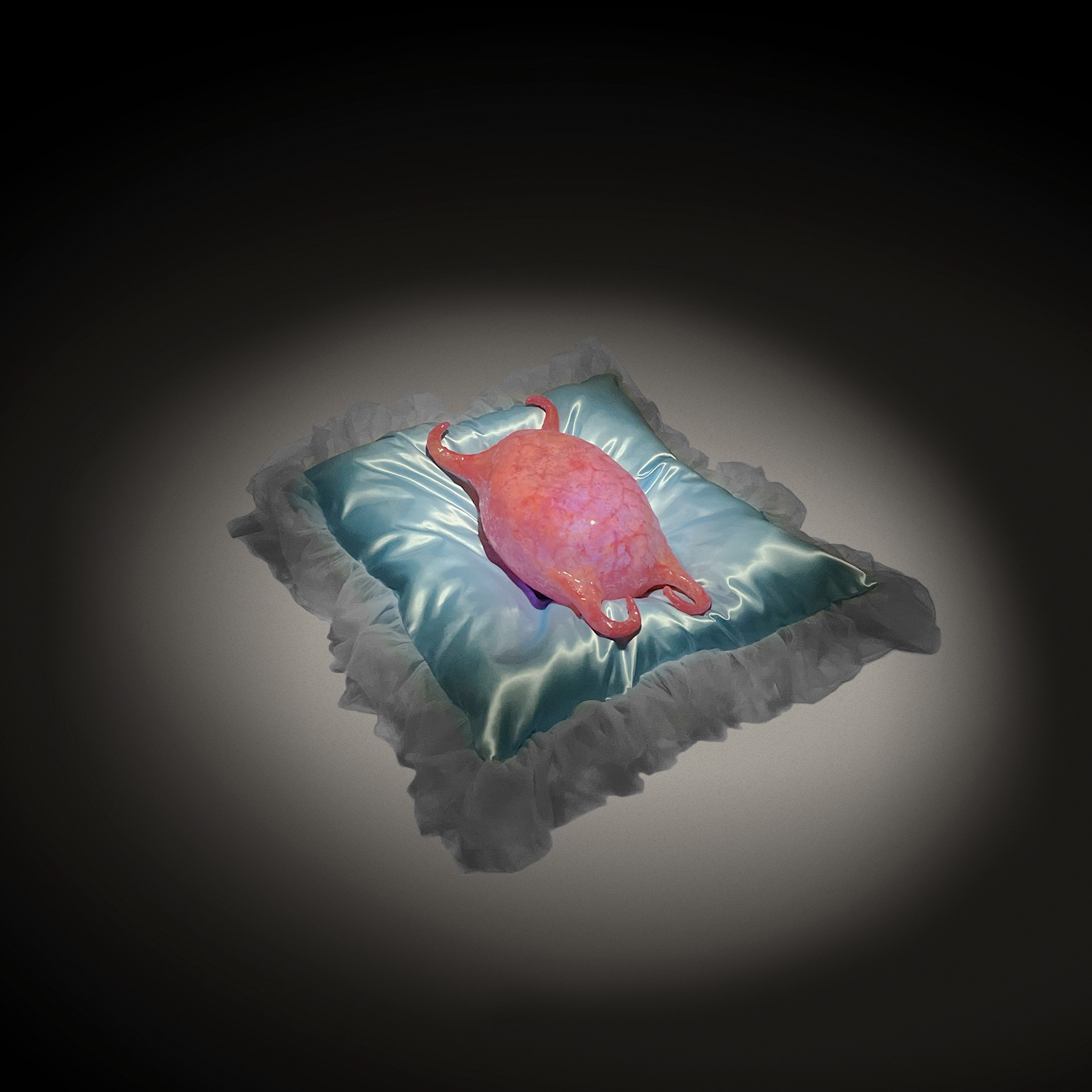tufanika
Tufanika is an artist-research collective founded by Amanda Paganini, Erica Garbin, and Sveva Crisafulli—three PhD candidates in Artistic Practice at the Accademia di Belle Arti di Venezia, within the inaugural cycle of the OPENSPACE doctoral program (2025-2028). Their individual research spans across the intersections of art and science, oceanic imaginaries, and the political agency of the body, sexuality, and decolonial feminism.
As a collective, Tufanika merges these inquiries into transdisciplinary installations, performances, and speculative narratives that explore fluid ecologies, post-human feminisms, and embodied forms of knowledge. Their work critically engages with notions of water not only as a material source, but as a site of resistance, transformation, and radical futures.
mermaid's purse
Mermaid’s Purse emerges from a practice of speculative storytelling, interweaving feminist science-fiction, ecofeminist theory, and environmental cartography to imagine amphibious futures shaped by water. The story begins as a speculation of bodily evolution in response to rising sea levels, submerged geographies and sociopolitical conflicts. Drawing from Francesco Ferrarese’s cartographic simulations of a future Italy largely submerged, the installation imagines a future reproduction that occurs outside the human body, through gestational capsules that resemble the egg-cases of marine rays and sharks, commonly known as “mermaid purses”. The installation stems from the desire of an ecofeminist horizon where sexuality and territory merge through non-extractive, affective norms. Bodily mutation occurs not as a mere biological response to environmental exhaustion, but as an effort to rewrite dominant power structures, particularly within medical, political and societal epistemologies.



Originally set in a submerged Venezia (Italy), the installation reflects on the impact of rising sea levels by
speculating on a post-anthropocenic future where bodies evolve beyond reproductive gender-normativity. The work confronts the extractive logics that have long governed both human reproduction and planetary exploitation, asking: what might emerge when we refuse the disciplinary imaginaries of the womb as private, enclosed, and feminized labour? How might monstrosity be reclaimed as a generative, evolutionary force? In Mermaid’s Purse, motherhood is no longer biologically interiorized, but distributed, decentred, and co-produced.
speculating on a post-anthropocenic future where bodies evolve beyond reproductive gender-normativity. The work confronts the extractive logics that have long governed both human reproduction and planetary exploitation, asking: what might emerge when we refuse the disciplinary imaginaries of the womb as private, enclosed, and feminized labour? How might monstrosity be reclaimed as a generative, evolutionary force? In Mermaid’s Purse, motherhood is no longer biologically interiorized, but distributed, decentred, and co-produced.
Installation
The central element of the installation is a sculptural organism modelled after the “mermaid’s purse”, the egg case of marine rays. Enlarged to the scale of a human newborn and suspended between biological accuracy and speculative fiction, its semi-translucent resin surface mimics the wet, vascular quality of placental tissue. Resting on a pale blue satin cushion framed with a halo of tulle, the form is presented in a setting that is at once delicate and unsettling. The installation stages a deliberate friction between the girly and the grotesque, collapsing taxonomies of the sacred and the kitsch. What might initially appear soft, frivolous, or ornamental is re-coded through proximity to visceral matter. Materials traditionally coded as feminine - satin, pastel hues, lace-like tulle - are mobilized not as decoration but as theoretical instruments, reclaiming the “shallow” as a terrain of affect and critique. In this tension, the work confronts the cultural politics of feminized aesthetics, which have historically been dismissed as unserious, excessive, or merely decorative. By juxtaposing shiny, silky textures with corporeal allusions to birth, blood, and biology, the installation insists on the critical force of what is often relegated to the margins of taste. It complicates the registers of disgust and desire, intimacy and spectacle, demanding that the viewer linger in the uneasy space where cuteness shades into the abject.
The central element of the installation is a sculptural organism modelled after the “mermaid’s purse”, the egg case of marine rays. Enlarged to the scale of a human newborn and suspended between biological accuracy and speculative fiction, its semi-translucent resin surface mimics the wet, vascular quality of placental tissue. Resting on a pale blue satin cushion framed with a halo of tulle, the form is presented in a setting that is at once delicate and unsettling. The installation stages a deliberate friction between the girly and the grotesque, collapsing taxonomies of the sacred and the kitsch. What might initially appear soft, frivolous, or ornamental is re-coded through proximity to visceral matter. Materials traditionally coded as feminine - satin, pastel hues, lace-like tulle - are mobilized not as decoration but as theoretical instruments, reclaiming the “shallow” as a terrain of affect and critique. In this tension, the work confronts the cultural politics of feminized aesthetics, which have historically been dismissed as unserious, excessive, or merely decorative. By juxtaposing shiny, silky textures with corporeal allusions to birth, blood, and biology, the installation insists on the critical force of what is often relegated to the margins of taste. It complicates the registers of disgust and desire, intimacy and spectacle, demanding that the viewer linger in the uneasy space where cuteness shades into the abject.
Exhibition
The work Mermaid’s Purse was exhibited in "Into the Water", held at Treehouse NDSM in Amsterdam from 18 September to 12 October 2025.
The meaning of the word 'Tufanika'
The name 'Tufanika' is inspired by Acqua Tufanica. 'Acqua' means water in Italian, but Acqua Tufanica was a poison used in the 17th century by women seeking to escape oppressive marriages. Our name is a tribute to resistance against patriarchal power, to the strength of sisterhood, to imagining alternative futures, and to the untamed, liberating force of water.
Disclaimer: we categorically condemn poisoning and all forms of violence — but we do love, fictionally speaking, a good villain.
